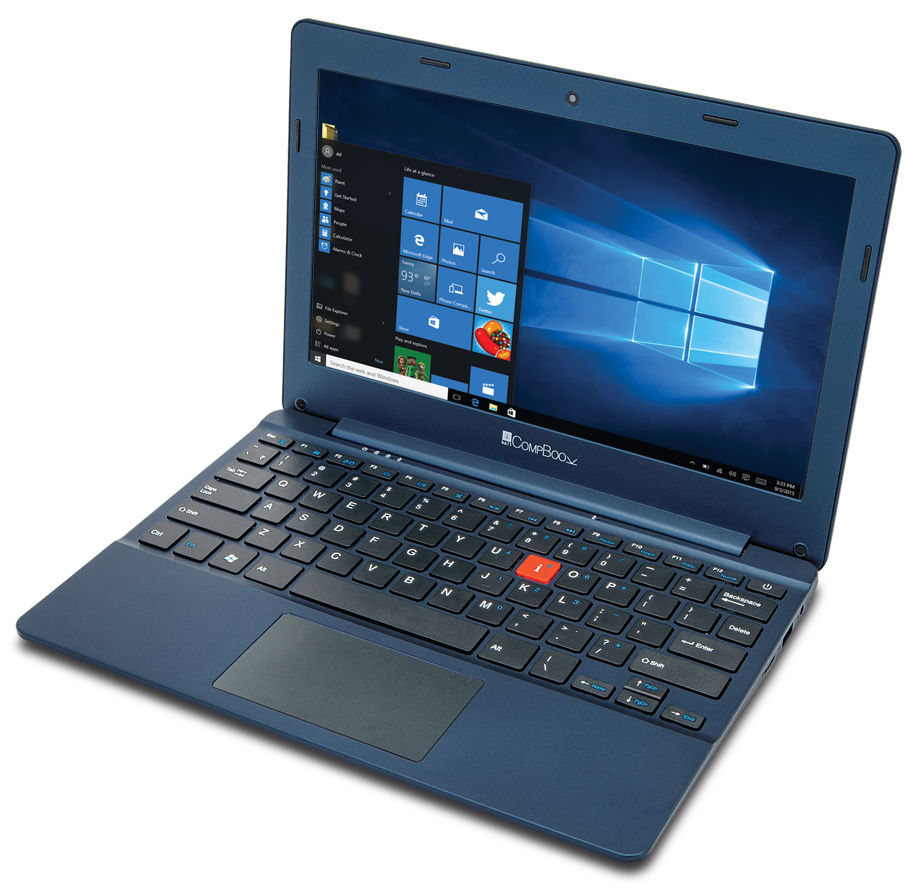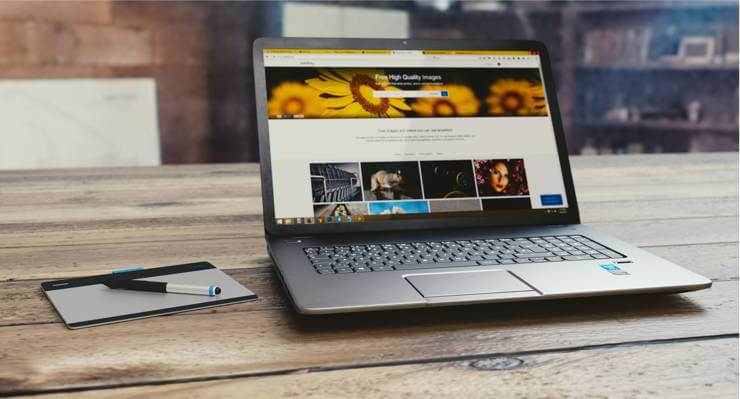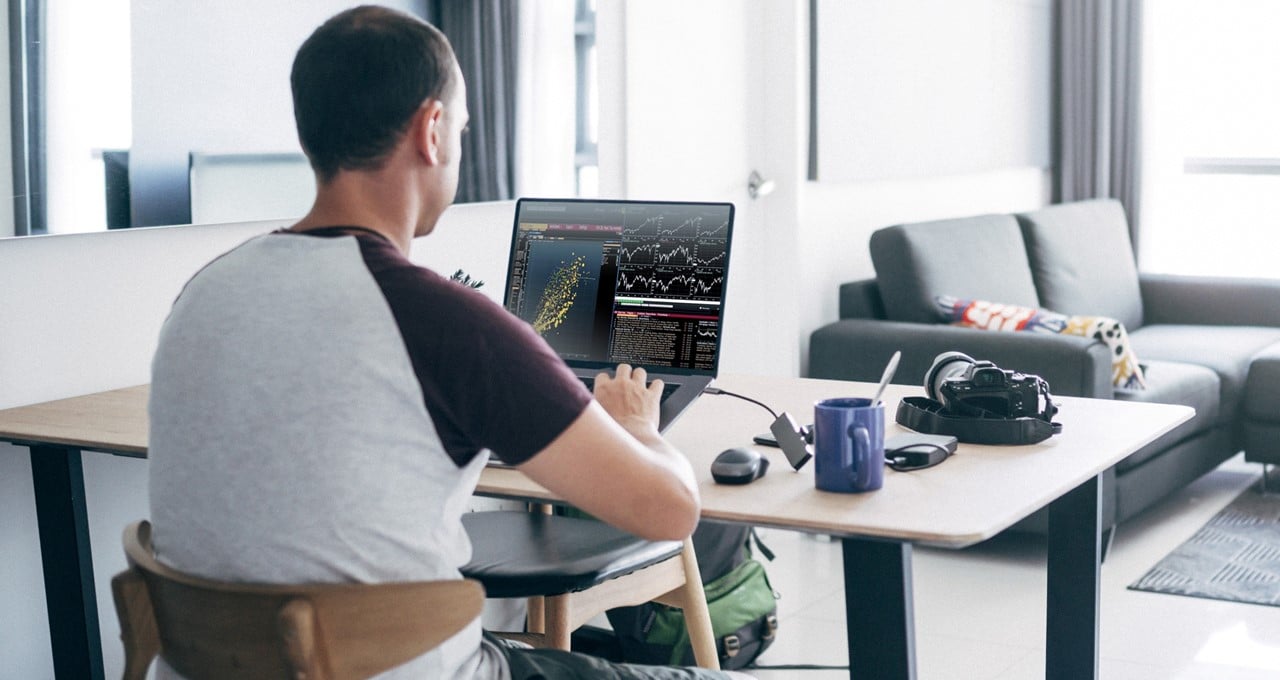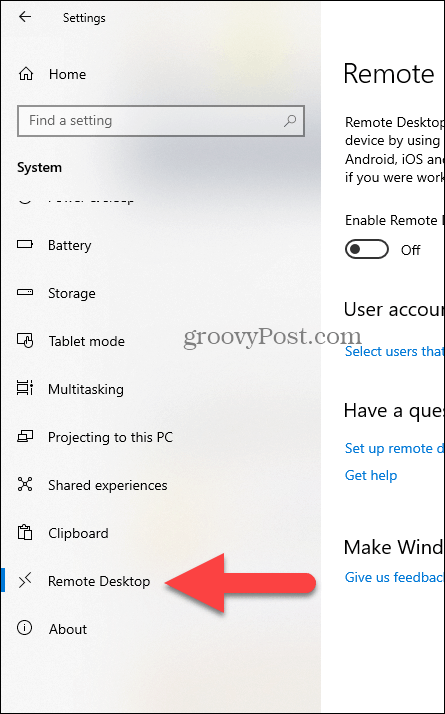- Drivers RDC Laptops & Desktops
- Drivers Rdc Laptops & Desktops Computers
- Drivers Rdc Laptops & Desktops Refurbished
- Drivers Rdc Laptops & Desktops Best Buy
- Drivers Rdc Laptops & Desktops Desktop
Microsoft has been trying to improve the touchpad experience on Windows 10 laptops. Laptops with “Precision Touchpads” are optimized by Microsoft, support standard gestures, and can be configured from the Settings app. Unfortunately, PC manufacturers can opt out of using Precision Touchpads. Now, there’s a way to install Precision Touchpad drivers even on laptops that don’t ship with them. Check that Remote Desktop is Enabled. The next step to to try to fix “remote desktop can’t connect to the remote computer” is to check whether Remote Desktop is enabled. Here are the steps: Right-click Windows 10 start. Then click Settings. At Windows Settings, click System. Then scroll down until you locate Remote Desktop.
- Download PC Drivers - Windows 10, Windows 8, Windows 7, XP and Vista Drivers - Help and Fixes for Driver Updates and Windows and Mac Errors and Support.
- Realtek PC Camera Driver 10.0.7 for Windows 10 The Realtek camera controllers are designed for notebook and desktop PCs. This driver offer support for Windows 10 64-bit and 32-bit.
Overview
Starting with Windows 8, mirror drivers will not install on the system. Mirror drivers described in this section will install and run only on earlier versions of Windows.
However, a special GDI accessibility driver model is available starting with Windows 8 to developers who want to provide mirror driver capabilities in assistive technologies for customers with disabilities or impairments. To learn more about this special driver model, please contact acc_driver@microsoft.com.
A remote display driver model that is based on the mirror driver architecture can also run starting with Windows 8, but has been removed in Windows 10, version 2004. For more information, see Remote Display Drivers.
Note
As of Windows 10, GDI accessibility drivers are no longer recommended for new products and Microsoft will remove support in a future OS version. Support for GDI remote display drivers has already been removed in Windows 10, version 2004. However, creating a remote display solution is still possible by building a custom Remote Protocol Provider and an Indirect Display Driver.
Mirror driver description
A mirror driver is a display driver for a virtual device that mirrors the drawing operations of one or more additional physical display devices. It is implemented and behaves much like any other display driver; however, its paired video miniport driver is minimal in comparison to a typical miniport driver. See Mirror Driver Support in Video Miniport Drivers (Windows 2000 Model) for more information about miniport drivers in mirroring systems. The Windows Driver Kit (WDK) through the Windows 7 edition (Version 7600) contains a sample mirror driver which includes component source files that are contained in three directories.
| Directory | Contains Source Files For |
|---|---|
| srcvideodisplaysmirrordisp | The mirror driver. |
| srcvideominiportmirrormini | The miniport driver. |
| srcvideodisplaysmirrorapp | The user-mode service. Also contains mirror.inf. |
GDI supports a virtual desktop and provides the ability to replicate a portion of the virtual desktop on a mirror device. GDI implements the virtual desktop as a graphics layer above the physical display driver layer. All drawing operations start in this virtual desktop space; GDI clips and renders them on the appropriate physical display devices that exist in the virtual desktop.
A mirror device can specify an arbitrary clip region in the virtual desktop, including one that spans more than one physical display device. GDI then sends the mirror device all drawing operations that intersect that driver's clip region. A mirror device can set a clip region that exactly matches a particular physical device; therefore, it can effectively mirror that device.
Note
Drivers RDC Laptops & Desktops
In Windows 2000 and later, the mirror driver's clip region must include the primary display device.
In Windows Vista and later, the Desktop Windows Manager (DWM) will be turned off when the mirror driver is loaded.
The mirror driver code sample illustrates how to implement a mirror driver. For more information that will help you understand the sample:
- Use the sample INF file, mirror.inf, as a template. See Mirror Driver INF File for details.
- See the mirror.exe application, which demonstrates how the mirror driver is attached to the virtual desktop. See Mirror Driver Installation for details.
- Refer to the Windows SDK documentation for information about using the Win32 EnumDisplayDevices function. You use this function to determine the .Display# name associated with your mirrored display device. This number is required to change the settings for your mirrored device. For multiple instances, # is a different number for each instance; therefore you must determine this number by iterating through the available display devices.
Attaching the mirrored device to the global desktop
Add the REG_DWORD registry entry Attach.ToDesktop to your driver's services keys.
Set this key's entry to 1 (one).
To disable the mirror driver, set this entry to 0 (zero).
As mentioned previously, the driver is installed and operates in a drawing layer that resides above the device layer. Because the mirror driver's coordinate space is the desktop coordinate space, it can span more than one device. If the mirror driver is intended to mirror the primary display, its display coordinates should coincide with the primary display's desktop coordinates.
After the mirror driver is installed, it will be called for all rendering operations that intersect the driver's display region. On a multiple-monitor system, this might not include all drawing operations if the mirror driver overlaps only the primary display device.
It is recommended that a user-mode service be used to maintain the mirror driver's settings. This application can ensure that the driver is loaded correctly at boot time and it can respond appropriately to changes to the desktop by getting notifications of display changes via the WM_DISPLAYCHANGE message.
GDI calls the mirror driver for any 2D graphics DDI drawing operation that intersects the driver's bounding rectangle. Note that GDI does not perform a bounding rectangle check if the surface is a device format bitmap; that is, if the SURFOBJ has an iType of STYPE_DEVBITMAP.
As always, the mirror driver must be implemented without the use of global variables. All state must exist in the PDEV for that particular driver. GDI will call DrvEnablePDEV for every hardware device extension created by the video miniport driver.
The mirror driver should not support DirectDraw.
A mirror driver must set the GCAPS_LAYERED flag to TRUE in the flGraphicsCaps member of the DEVINFO structure.
An accessibility mirror driver must set the GCAPS2_EXCLUDELAYERED and GCAPS2_INCLUDEAPIBITMAPS flags to TRUE in the flGraphicsCaps2 member of the DEVINFO structure.
A mirror driver can optionally support brush realizations by implementing DrvRealizeBrush.
GDI allows the same driver to run on both a single and multiple-monitor system. A driver in a multiple-monitor system need only track its position within the global desktop. GDI provides this position to the driver whenever a Win32 ChangeDisplaySettings call occurs, such as when a user dynamically changes the monitor's position in the desktop by using the Display program in Control Panel. GDI updates the dmPosition member of the DEVMODEW structure accordingly when such a change occurs. A driver can receive notification of such a change by implementing DrvNotify. See Mirror Driver Installation for more information.
Note
Mirror drivers are not required to render with pixel-perfect accuracy when rendering on the client side with such accuracy may be difficult. For example, the adapter/monitor receiving the mirrored image is not required to render Grid Intersect Quantization (GIQ) line drawing and polygon fills with the same precision as the adapter/monitor being mirrored.
-->Applies To: Windows 10, Windows Server 2016
This topic for the IT professional describes the behavior of Remote Desktop Services when you implement smart card sign-in.
The content in this topic applies to the versions of Windows that are designated in the Applies To list at the beginning of this topic. In these versions, smart card redirection logic and WinSCard API are combined to support multiple redirected sessions into a single process.
Smart card support is required to enable many Remote Desktop Services scenarios. These include:
Using Fast User Switching or Remote Desktop Services. A user is not able to establish a redirected smart card-based remote desktop connection. That is, the connect attempt is not successful in Fast User Switching or from a Remote Desktop Services session.
Enabling Encrypting File System (EFS) to locate the user's smart card reader from the Local Security Authority (LSA) process in Fast User Switching or in a Remote Desktop Services session. If EFS is not able to locate the smart card reader or certificate, EFS cannot decrypt user files.
Drivers Rdc Laptops & Desktops Computers

Remote Desktop Services redirection

In a Remote Desktop scenario, a user is using a remote server for running services, and the smart card is local to the computer that the user is using. In a smart card sign-in scenario, the smart card service on the remote server redirects to the smart card reader that is connected to the local computer where the user is trying to sign in.
Remote Desktop redirection
Notes about the redirection model:
This scenario is a remote sign-in session on a computer with Remote Desktop Services. In the remote session (labeled as 'Client session'), the user runs net use /smartcard.
Arrows represent the flow of the PIN after the user types the PIN at the command prompt until it reaches the user's smart card in a smart card reader that is connected to the Remote Desktop Connection (RDC) client computer.
The authentication is performed by the LSA in session 0.
The CryptoAPI processing is performed in the LSA (Lsass.exe). This is possible because RDP redirector (rdpdr.sys) allows per-session, rather than per-process, context.
The WinScard and SCRedir components, which were separate modules in operating systems earlier than Windows Vista, are now included in one module. The ScHelper library is a CryptoAPI wrapper that is specific to the Kerberos protocol.
The redirection decision is made on a per smart card context basis, based on the session of the thread that performs the SCardEstablishContext call.
Changes to WinSCard.dll implementation were made in Windows Vista to improve smart card redirection.
Drivers Rdc Laptops & Desktops Refurbished
RD Session Host server single sign-in experience
As a part of the Common Criteria compliance, the RDC client must be configurable to use Credential Manager to acquire and save the user's password or smart card PIN. Common Criteria compliance requires that applications not have direct access to the user's password or PIN.
Common Criteria compliance requires specifically that the password or PIN never leave the LSA unencrypted. A distributed scenario should allow the password or PIN to travel between one trusted LSA and another, and it cannot be unencrypted during transit.

When smart card-enabled single sign-in (SSO) is used for Remote Desktop Services sessions, users still need to sign in for every new Remote Desktop Services session. However, the user is not prompted for a PIN more than once to establish a Remote Desktop Services session. For example, after the user double-clicks a Microsoft Word document icon that resides on a remote computer, the user is prompted to enter a PIN. This PIN is sent by using a secure channel that the credential SSP has established. The PIN is routed back to the RDC client over the secure channel and sent to Winlogon. The user does not receive any additional prompts for the PIN, unless the PIN is incorrect or there are smart card-related failures.
Remote Desktop Services and smart card sign-in
Remote Desktop Services enable users to sign in with a smart card by entering a PIN on the RDC client computer and sending it to the RD Session Host server in a manner similar to authentication that is based on user name and password.
In addition, Group Policy settings that are specific to Remote Desktop Services need to be enabled for smart card-based sign-in.
To enable smart card sign-in to a Remote Desktop Session Host (RD Session Host) server, the Key Distribution Center (KDC) certificate must be present on the RDC client computer. If the computer is not in the same domain or workgroup, the following command can be used to deploy the certificate:
certutil -dspublish NTAuthCA 'DSCDPContainer'
Drivers Rdc Laptops & Desktops Best Buy
The DSCDPContainer Common Name (CN) is usually the name of the certification authority.

Example:
certutil -dspublish NTAuthCA <CertFile> 'CN=NTAuthCertificates,CN=Public Key Services,CN=Services,CN=Configuration,DC=engineering,DC=contoso,DC=com'
For information about this option for the command-line tool, see -dsPublish.
Remote Desktop Services and smart card sign-in across domains
To enable remote access to resources in an enterprise, the root certificate for the domain must be provisioned on the smart card. From a computer that is joined to a domain, run the following command at the command line:
certutil -scroots update
For information about this option for the command-line tool, see -SCRoots.
For Remote Desktop Services across domains, the KDC certificate of the RD Session Host server must also be present in the client computer's NTAUTH store. To add the store, run the following command at the command line:
certutil -addstore -enterprise NTAUTH <CertFile>
Where <CertFile> is the root certificate of the KDC certificate issuer.
Drivers Rdc Laptops & Desktops Desktop
For information about this option for the command-line tool, see -addstore.

Note If you use the credential SSP on computers running the supported versions of the operating system that are designated in the Applies To list at the beginning of this topic: To sign in with a smart card from a computer that is not joined to a domain, the smart card must contain the root certification of the domain controller. A public key infrastructure (PKI) secure channel cannot be established without the root certification of the domain controller.
Sign-in to Remote Desktop Services across a domain works only if the UPN in the certificate uses the following form: <ClientName>@<DomainDNSName>
The UPN in the certificate must include a domain that can be resolved. Otherwise, the Kerberos protocol cannot determine which domain to contact. You can resolve this issue by enabling GPO X509 domain hints. For more information about this setting, see Smart Card Group Policy and Registry Settings.
See also
